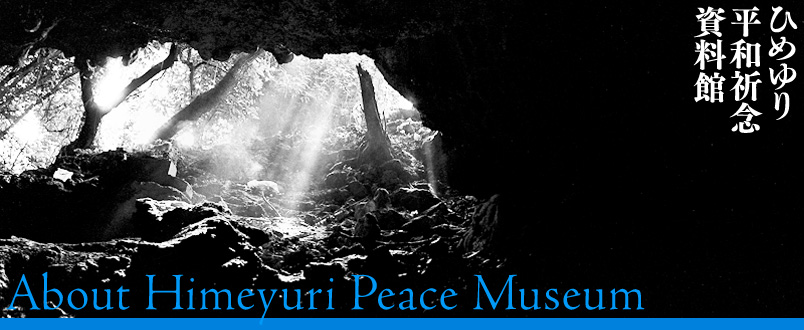
Late at night on March 23, 1945, 222 students and 18 teachers from the Female Division of the Okinawa Normal School and the Okinawa First Girls' High School were inducted into units at the Okinawa Army Field Hospital in the village of Haebaru about 3 miles southeast of Naha. The U.S. Army invaded the Kerama Islands on March 26 and made a landing on the west coast of the central part of Okinawa Island by April 1. The number of dead and injured increased sharply on the Japanese side as the U.S. forces pushed the battlefront southward. Worsening war conditions subjected the mobilized students to hideous working conditions. They took care of the constantly arriving injured, secured water and carried food in for the patients and hospital staff, and buried the dead. These round-the-clock duties didn't allow them even time for a nap.
In late May, as U.S. forces approached, the students and Japanese soldiers left the Army Field Hospital and started on their way southward. After a series of bombings, however, on June 18 they were suddenly dismissed. The students had nowhere to go under the U.S. siege. Some were killed in the battle raging around them, while others killed themselves with tear-gas shells or hand grenades. Of 240 students and teachers, 136 who joined the Army Hospital and 90 who joined other corps perished.
The U.S. Army regarded the Battle of Okinawa as a pivotal operation to secure a site for the invasion of mainland Japan and invested their entire military resources. On the other hand, the Japanese forces in caves waged a "war of attrition": trying to drag the battle out for even one day longer and to force the U.S. Army to delay its assault on the mainland. Japanese forces in Okinawa, therefore, decided to enlist the tactic of an all-out mobilization of the Okinawan people including students, who were organized into student corps. The war of attrition and the all-out mobilization claimed the lives of more than 120,000 Okinawans.
About 40 years have passed since the Battle of Okinawa, and yet the indescribable tragedy we experienced and witnessed on the battlefield still haunts our memory. We will never forget the horror of the pre-World War II militaristic education, which drove us to the battlefield with no skepticism but rather with a willingness to serve.
We strongly feel that we must continue to tell our stories of a war filled with insanity and brutality now that the post-war generations, who have no idea what war is, have formed the majority of our population and that the peace-threatening signs in both domestic and international politics cannot be ignored.
Believing an appeal for world peace will be the way to repose the souls of those who perished, we, the Himeyuri Alumnae, founded the Himeyuri Peace Museum on this site. We are most grateful for the sincere encouragement and support that we received from many individuals and organizations in and outside the prefecture in the process of its foundation.
Himeyuri Alumnae Incorporated Foundation
June 23, 1989
